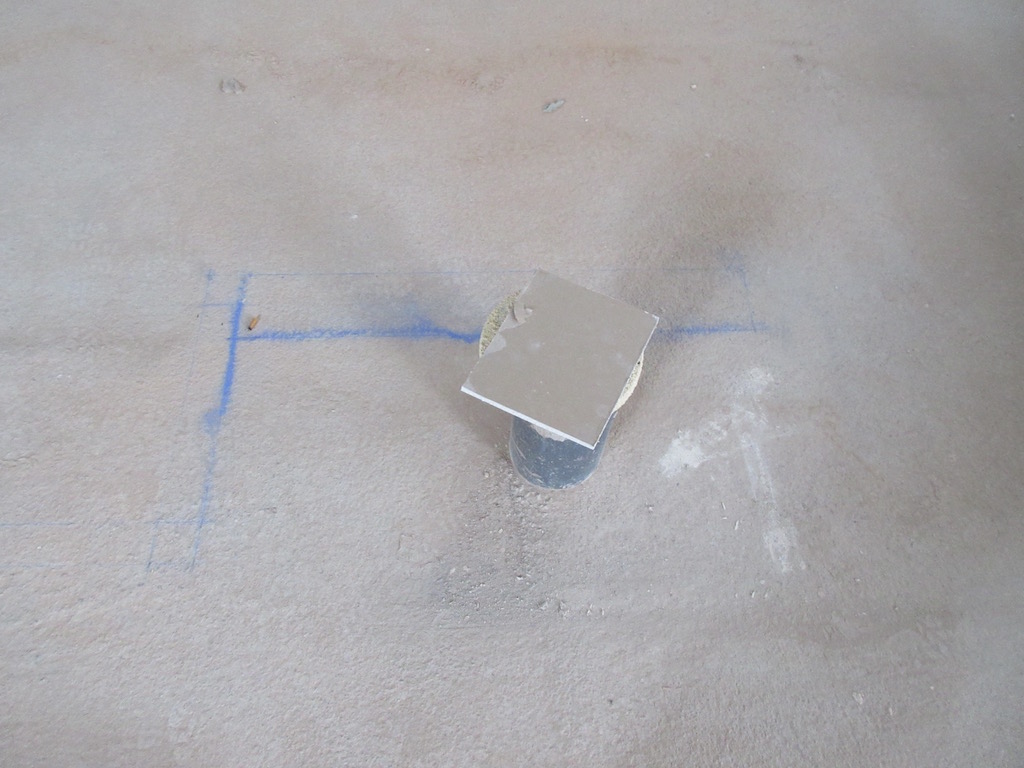Learning about Log Burners
We plan on putting a wood-burning stove in our living area, but looking into their installation requirements has made us question some of our design choices.
When we designed the area for the wood burner, we didn’t realise there are minimum distance requirements from adjacent walls. We have created a little alcove for it, with a narrow wall on one side and a half-height wall behind. The idea was that the wood burner would sit quite snugly in this space. Now, with the minimum distance requirements, it looks like we might have a problem.
The minimum distances vary hugely depending on the wood burner and the material of the wall, and they are not easy to find (often buried deep within the technical specifications or installation manual). Some of them need to be up to metre away from the wall, and this certainly doesn’t come across in the catalogues and photos.
The wall behind the wood burner seems ok. The wood burners we are looking at are designed to sit with their back to a wall, so the minimum distances from the wall behind are smaller. And, because our half-height wall is being built from concrete bricks, we can reduce the distance even further since concrete is a non-flammable material.
It is the wall to the side that is causing the concern. The minimum distances we are seeing between a wood burner and a side wall are typically much greater than for the wall behind, and much greater than we had counted on. Our side wall is plasterboard which is not always considered non-flammable. Thankfully, our builder has installed fireproof plasterboard in the area. This reduces the minimum distance requirements somewhat and at least gives us hope of being able to put the wood burner where we want it.
Further complicating matters is the fresh air intake. As modern houses are relatively air-tight and fires need a good air supply, French regulations require a supply of fresh air near the fire. These take the form of a ventilation grill either in the wall or the floor nearby. Ours is in the floor; it is basically a big pipe down to the basement.
Now, while I understand the need for air, and having it come from the basement is better than from directly outside, I am not thrilled at the idea of a big hole in our nicely insulated house. The fire is not our primary heating system (we have super-efficient underfloor heating for that), it is there to add ambience and some extra cosiness in the cold, dark depths of winter. But the ventilation hole is always there, leaching heat even when the fire isn’t lit.
Luckily, there are a handful of new generation wood burners that can connect directly to the fresh air intake. So, instead of a grill in the floor, a pipe inside the base of the wood burner would connect directly to the floor air inlet. The fire gets the air it needs without us having a cold, draughty hole in the floor. This is a great solution. The only hiccup is that it limits where we can put the wood burner; basically the air intake in the bottom of wood burner has to line up with the air intake in the floor, and there is not much room for flexibility.
We have a puzzle to solve. We need a wood burner that can connect to external air from the bottom and line up with our ventilation pipe in the floor while still respecting the minimum distance requirements to the back and side. I hope there is a suitable wood burner out there for us.

See the walls marked in blue around the ventilation pipe? There’s not a lot of space for us to play with.